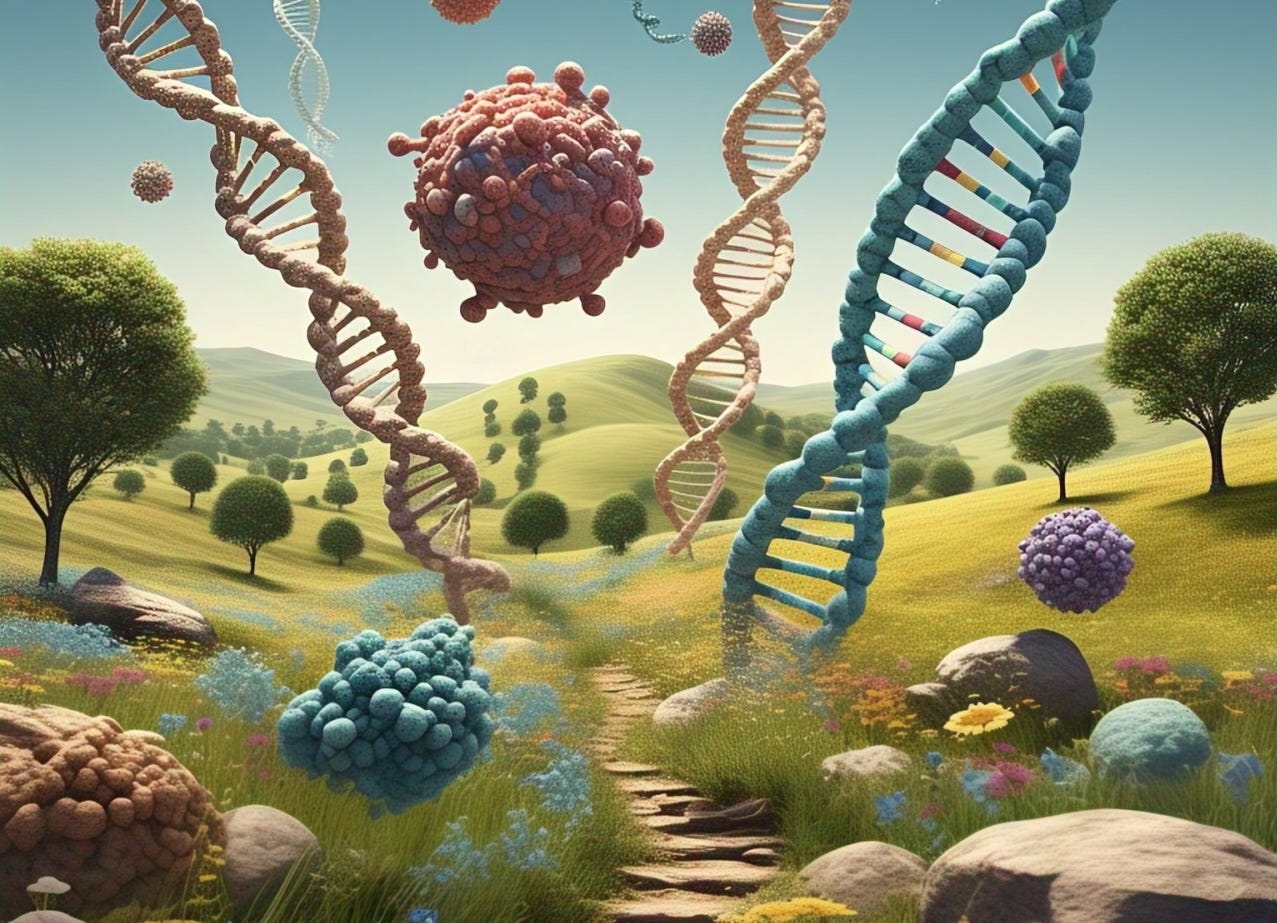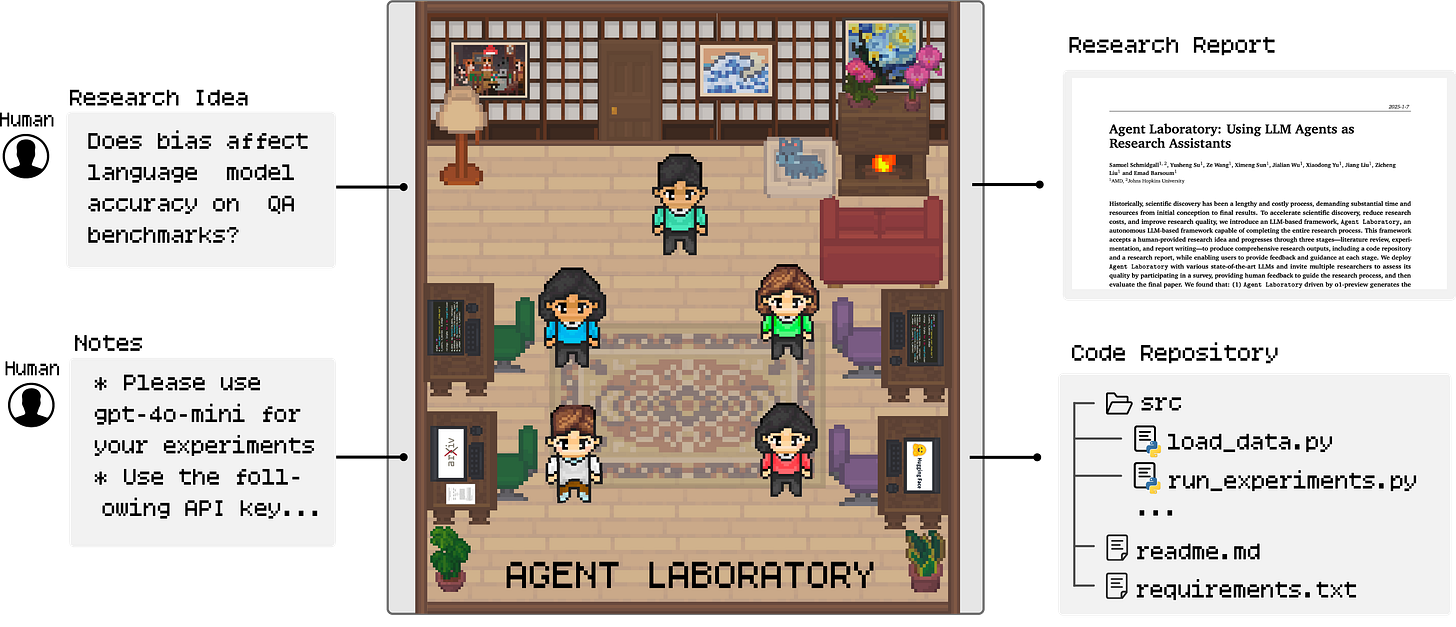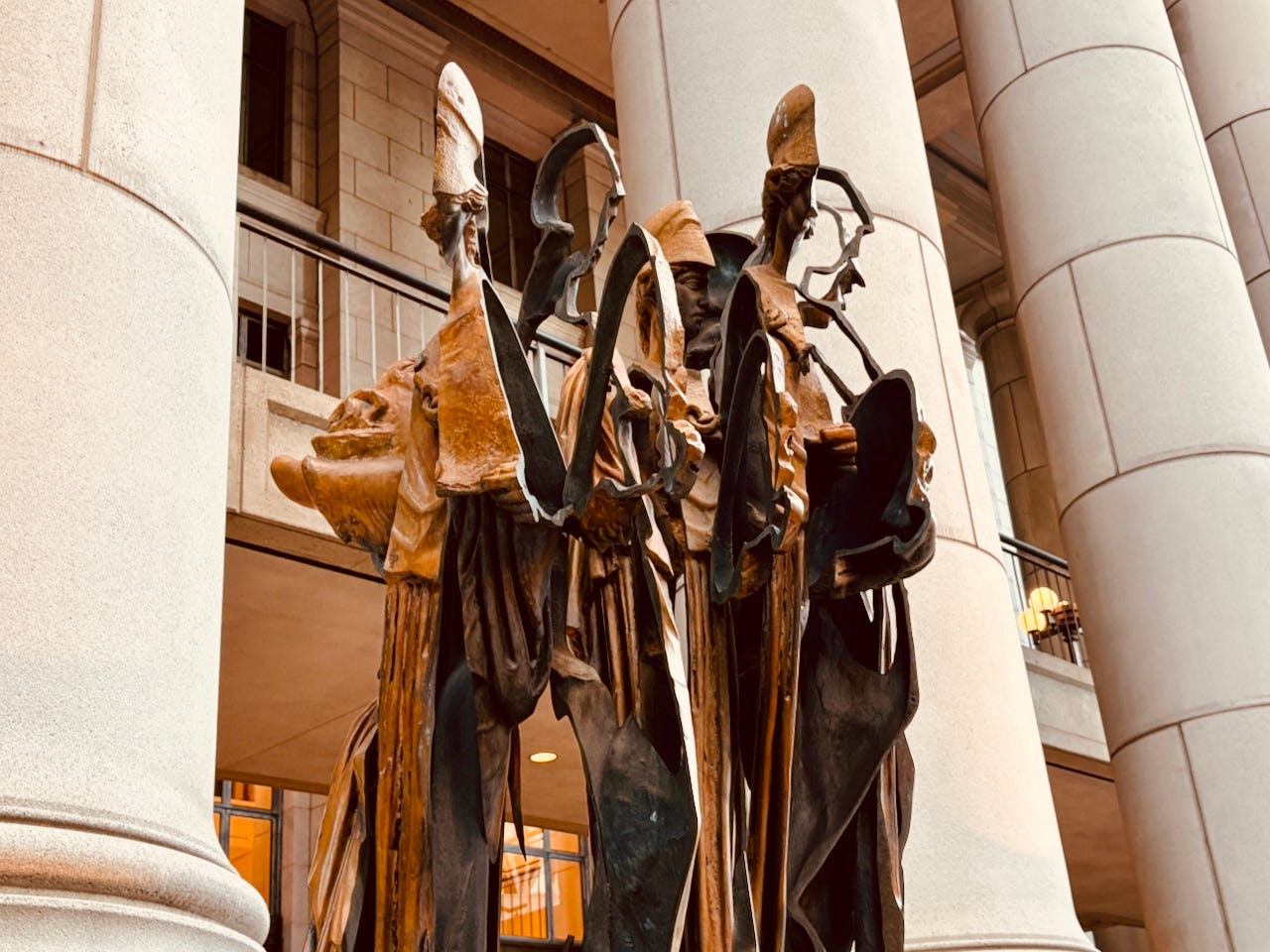AI-Powered Agent Labs, 3D Genomic Structure Prediction, Deep Tech Acceleration & More
"AI for Science" Newsletter Is Now "Discovery Engines"
Hi friends, this month, we’re kicking things off with two exciting updates:
New Name, Even Better Content. As we launch into 2025, we’re bringing our “AI for Science” newsletter and podcast under one unified brand: Discovery Engines. Expect the same AI for Science insights you love, now paired with in-depth interviews that go beyond the headlines, available for you on YouTube, Spotify, and Apple Podcasts.
Sponsorships: Activated. This newsletter and podcast are a labor of love. Your support helps us cover essentials like studio rentals (for recording interviews), A/V equipment (to keep things polished), and travel (to meet and recruit unique guests). Huge thanks to those who’ve already pledged their support. Support us here with a paid subscription. Is your company or startup interested in sponsoring too? Drop us a line.
Alrighty, enough housekeeping. Let’s dig into this month’s latest in accelerating scientific discovery. –Nabil
Arc Institute & NVIDIA Partner to Accelerate Computational Biomedical Research: Arc Institute, a research organization rethinking how science is done, has announced a new partnership with NVIDIA to scale AI-driven biological research. Backed in part by Stripe Co-Founder Patrick Collison, Arc is exploring new ways AI can design, predict, and understand biology. This collaboration builds on Arc’s previous work with Evo, an AI model built to predict and design at the level of DNA and across RNA and proteins in single-celled organisms.
OpenAI’s “GPT-4b micro” Targets Longevity Science: In another sign of large AI labs moving into the natural sciences, OpenAI says it trained a new AI model, in partnership with Retro Biosciences, to re-engineer proteins that turn human skin cells into stem cells. One impact? To contribute to the field of longevity, which aims to increase healthy lifespan. The model is still a custom, private model. More coverage via the MIT Tech Review, here.
NSF Funding Faces Major Cuts Under New Administration: The U.S. National Science Foundation was established in 1950 by Congress to promote the progress of science, advance national health and secure national defense. According to recent reporting, budget cuts and a change in directives on what science gets funded are headed to the agency. According to recent reporting, the NSF’s funding could drop from $9 billion to $3 billion, with up to 50% staff reductions possible. Additional coverage here.
AI Increases Research Productivity, But At What Cost? Andrew Maynard covers a recently-published study from MIT’s Aidan Toner-Rodgers which “shows a significant increase in research and development productivity when scientists used an AI tool designed specifically to increase the rate of discovery of new materials.” However, “while enjoyment from increased productivity partially offsets this negative effect – especially for high-ability scientists – 82% of researchers see an overall decline in satisfaction.” Original study linked here.
"...there’s tenacity, curiosity, hard work, brain power, but then there’s also: luck, timing and mentorship. Which I think are so important in the ultimate success that you achieve as a researcher."
I love this insight from Hemai Parthasarathy, a neuroscientist (Johns Hopkins, MIT), experienced editor (Nature, PLOS), and expert in helping deep tech startups scale (Thiel Foundation, Google X, MIT The Engine).
Recently, I sat down with Hemai for a discussion on my podcast: Discovery Engines. In our conversation, we explored:
• Hemai's journey from the lab bench to scientific publishing and deep tech acceleration.
• How scientific publishing has adapted to new trends in technology and open science.
• The founding story and model behind the Thiel Foundation's Breakout Labs.
• Navigating the political headwinds impacting the deep tech funding landscape.
• The key factors and the importance of patient capital for deep tech startup success.
If you're interested to hear how scientist founders make it from discovery to market success, join me in this deep dive with Hemai as she shares her unique experience across the deep tech ecosystem.
Watch/Listen now: YouTube | Spotify Podcasts | Apple Podcasts
Predicting 3D Genomic Structure from DNA Sequences: MIT chemists have developed ChromoGen, a generative AI model that predicts how a specific DNA sequence will arrange itself in the cell nucleus. Their model can predict thousands of structures in minutes, enabling researchers to more easily study how the 3D organization of the genome affects individual cells’ gene expression patterns and functions. Data and model available here.
AMD & Johns Hopkins Launch LLM-Powered Agent Lab: While some of the more headline-grabbing AI for Science efforts are focused on areas such as building biological foundation models, some might argue that automating the remainder of the scientific development process is equally impactful. AMD and John Hopkins’ Agent Laboratory: “consists of specialized agents driven by large language models to support you through the entire research workflow – from conducting literature reviews and formulating plans to executing experiments and writing comprehensive reports.” Try it here.
2024 State of Techbio Survey: Key Insights: TechBio community organization Bits In Bio recently published survey results from 200+ respondents, who shared how they’re leveraging emerging tools to push boundaries in biotech. What stood out for me:
ML Models: "60% of respondents use proprietary or in-house models regularly, surpassing GPT-4 (52%) and AlphaFold (34%)
ML Applications: "30% of respondents prioritize library/in silico screening to accelerate drug discovery, 29% focus on target identification/selection for therapeutic development, and 25% apply ML for lab automation.”
Lab Automation: "Over 60% of respondents use lab automation for data acquisition and analysis, while 58% employ it for liquid handling, pipetting, and sample preparation/extraction." Download the full dataset here.
The Block Universe: Everything All At Once. Some interpretations of Einstein’s theory of relativity suggest that all of time – past, present, and future – exists simultaneously, much like a movie encoded onto a DVD. Our lived experience might just be our consciousness moving through specific “frames”—similar to how a laser scans a disc or a needle traces the grooves of a vinyl record. Mind-bending? Absolutely. And it raises profound questions about free will and the nature of time itself. For a fun, visual explainer, check out this video from the YouTube channel Kurzgesagt:
Find this newsletter valuable? Subscribe for regular insights, and share it with friends who are passionate about accelerating scientific discovery.
Help us improve. Like a good neural network, this newsletter is only as effective as the input it receives. We’d love to hear your feedback – let us know how we can make it even better for you.
Catch you on the next one 🤙🙌 – Nabil










